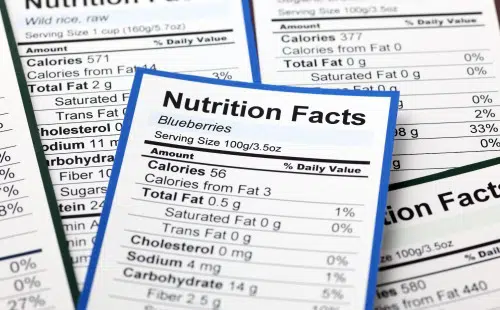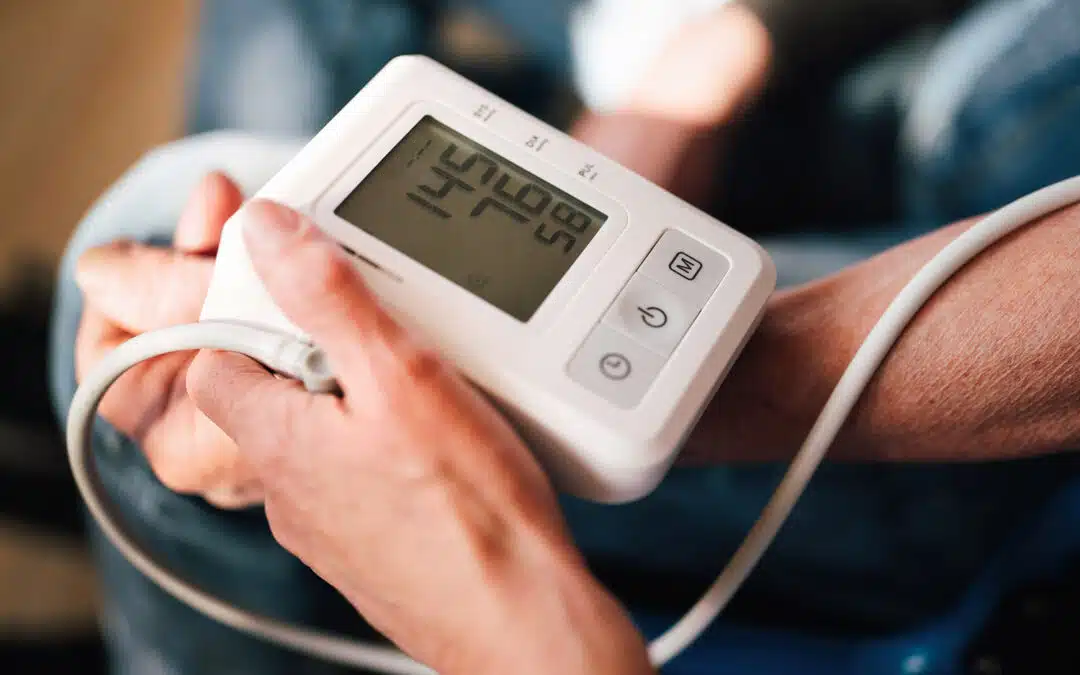A balanced diet provides your body with the fuel it needs to carry out essential functions. But what exactly does it mean to eat a balanced diet? And how are you supposed to know if your diet is meeting the mark? The answers to these questions depend on a few different factors, but you can get a general understanding of what your recommended daily nutrient intake should be if you learn how to read a nutrition facts label.
Keep reading to learn more about the recommended daily intake amounts for various macronutrients and micronutrients your body needs, as well as how to gather this information from nutrition facts labels.
What are the RDA Guidelines?
The Food and Nutrition Board of the United States National Academy of Sciences makes nutrient recommendations based on the needs of the population. The Dietary Reference Intake (DRI) is the general reference term used to plan and assess the nutrient needs of healthy individuals and is the basis for the information found on Nutrition Facts labels.
This value can be further broken down into the following categories, which vary by age, sex, and energy consumption and usage:
- The Recommended Dietary Allowance (RDA) is an outline of the nutrient levels necessary for the majority of healthy people in the US and covers more than 97% of the population.
- Adequate Intake (AI) is established when there is insufficient evidence to develop an RDA, so the recommendation is set at a level that is assumed to ensure nutritional adequacy in a healthy population.
- The Tolerable Upper Intake Level (UL) is defined as the maximum daily intake unlikely to cause adverse health effects.
Although these terms aren’t explicitly used on Nutrition Facts Labels, they’re still important to know when trying to gain a deeper understanding of your individual nutrient requirements.
How to Read Nutrition Facts Labels
Nutrition Facts labels, despite their presence on almost every item in grocery stores, can seem tricky to wade through if you don’t know what you’re looking for. But once you understand the importance of all the numbers and percentages, which were made mandatory for food labeling in 1990 by the Nutrition Labelling and Education Act, establishing healthy eating habits is just a matter of willpower.
There are five key sections you should be paying attention to while reading a Nutrition Facts label:

- The Serving Size shows how big a serving is and how many servings are in each container. This number is given in familiar measurements like “pieces” or “cups.” It’s also worth noting that if individuals wish to consume more than one serving, the amount of calories, sodium, and other nutrients would also increase based on the serving size information. For example, two servings would double the amount of calories and sodium.
- The Amount of Calories listed are for a single serving of food, which may be less than what is in the container.
- The Percent Daily Value (%DV) column outlines how the nutrients in one serving of the food contribute to your overall diet on a day-to-day basis. These values can help you choose foods high in the nutrients your body needs and low in nutrients you should try to limit.
- The Nutrients to Limit are defined by the FDA as total fat, cholesterol, and sodium, due to their potential to increase the risk of heart disease, high blood pressure, and even some cancers.
- Essential Nutrients, on the other hand, lists key vitamins and minerals necessary for maintaining strength and health and include dietary fiber, calcium, potassium, and vitamins A and C.
What is the Amount of Nutrients Needed per Day?
An exact answer to this question will vary based on your age, sex, height, weight, and level of physical activity, but the RDA is a good place to begin. The RDA bases %DV on a daily intake of 2,000 calories, which is the FDA-established average for healthy individuals in the US.
The general advice given on nutrient requirements is as follows:
- Total Fat: Choose foods with less than 5g of total fat per serving and opt for foods with heart-healthy monounsaturated and polyunsaturated fats.
- Saturated Fat: Limit intake and choose foods with less than 2g per serving since saturated fats are shown to increase LDL (bad) cholesterol.
- Trans Fat: Limit intake and choose foods with 0g of trans fat per serving as trans fat is shown to increase LDL cholesterol and decrease HDL (good) cholesterol.
- Sodium: Aim for less than 2,300mg of sodium per day. Individuals with high blood pressure or other cardiovascular issues should limit daily intake to no more than 1,500mg per day. Many foods already have sodium with salt added, so we recommend being mindful of this when maintaining your sodium intake.
- Added Sugars: Women should consume no more than 25g of added sugars per day. For men, the recommended limit is 37g of added sugar daily.
- Dietary Fiber: Aim to consume, at minimum, 25g of dietary fiber per day, as it aids in the reduction of blood glucose and blood fats in addition to helping prevent constipation and the risk for certain diseases.
As mentioned above, these amounts will vary from individual to individual, but as a general guideline, these recommended daily nutrient intake levels are a good place to start when establishing a balanced diet of heart-healthy, nutrient-dense foods. If you’d like to have a more accurate estimation of your body’s individual nutritional needs, consider using a Dietary Reference Intake calculator like the DRI Calculator for Healthcare Professionals available on the USDA’s website.
Now that you’ve learned how to read Nutrition Facts labels and come to understand your recommended daily nutrient intake, you’re on the right track to ensuring heart health and lowering your risk of developing cardiovascular disease.
Vital Heart & Vein
At Vital Heart & Vein, our team of cardiologists and vascular specialists provide a full spectrum of diagnostic testing, comprehensive therapies, and interventional/electrophysiologic procedures utilizing the latest technology to ensure that our patients can live their lives to the fullest.
For more information on heart health or to request an appointment, call our office at (281)446-3645. If you are having a medical emergency, please call 911 or make your way to the nearest hospital.






